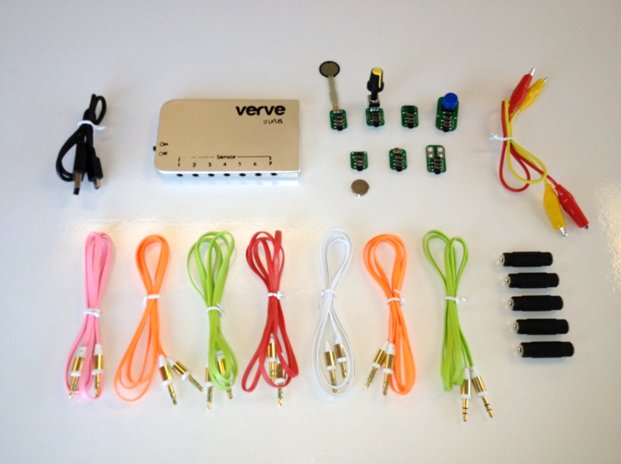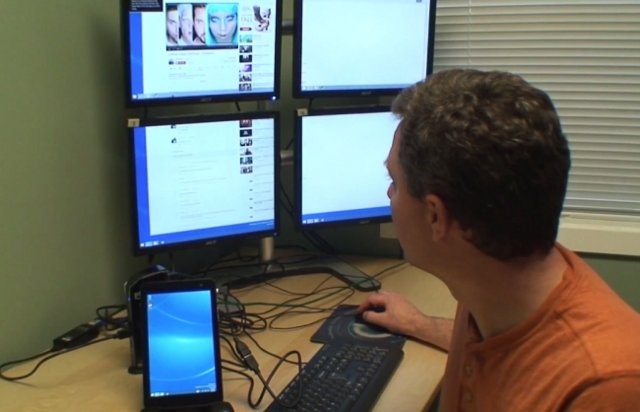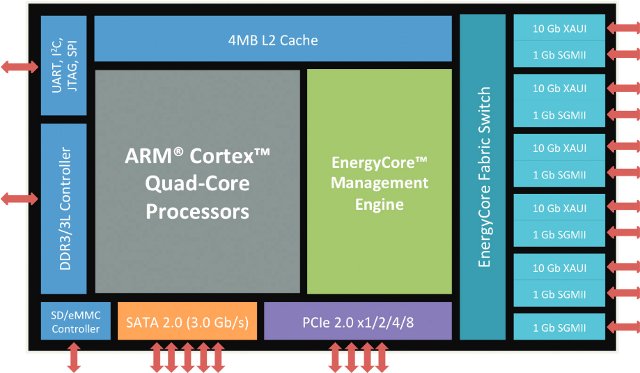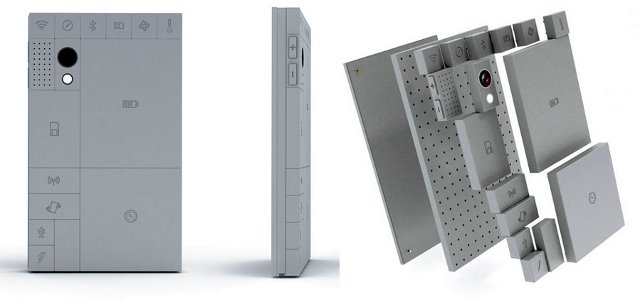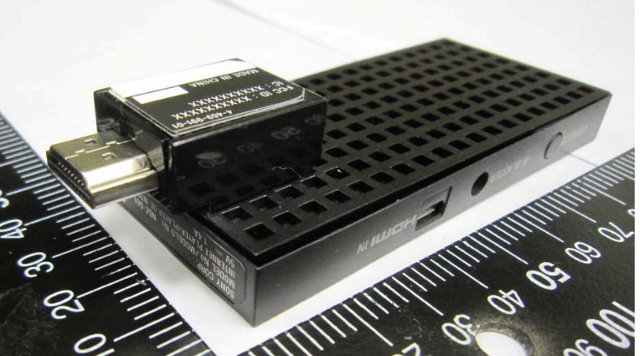The VERVE is a little box that connects to one of the USB port of your Windows or Mac OS X computer (Linux support coming in 2014), and supports up to 7 sensors. It is available as part of a kit for $99 on Kickstarter. The kit includes the VERVE, a mini USB to USB cable, seven “sensors” (A force sensor, a push button, a light sensor, a potentiometer, a motion sensor, a magnet sensor, and a touch sensor), two banana clips for the touch sensor, seven cables to connect the sensors to the VERVE unit, and 5 extension blocks. Once the VERVE unit is connected to your computer, and the needed sensors are connected to the VERVE, you can launch the VERVE application to visualize the sensors data in real-time, and assign a mouse or keyboard action based on the sensor’s data level as shown below. There’s also an […]
Dell Venue 8 Pro Windows 8.1 Tablet Used as Desktop PC with 4 Monitors
I’ve seen several attempts using a mobile device such as a tablet or smartphone as a desktop, such as using the Galaxy Nexus with an HDMI monitor via MHL, and Canonical’s Ubuntu for Phones and Tablets. The first solution runs Android, an operating systems not (yet) really suitable for desktop use, and Canonical solutions are still work in progress. But the recent video demonstration shown by Bernie Thompson, Plugable Technologies’ founder, with a Dell Venue 8 Pro tablet (about $300) powered by Intel Atom Z3740D “Bay Trail” processor and running Windows 8.1, is the first one which seems actually usable for most desktop uses, baring high-end gaming, or other tasks where the quad core Intel Atom processor may not provide enough processing power. The full setup works as follows. The Dell tablet is connected to a universal USB 3.0 docking station (UD-3000) via a micro USB OTG cable. The docking […]
Android 4.4 KitKat on Galaxy Nexus – ROM, Linaro, and Petition
Google has already released the binaries for Android 4.4 “KitKat” for the Nexus 5, and images are coming for Nexus 4, Nexus 7, and Nexus 10, in the next few weeks. Source code is also available in AOSP (Android Open Source Project). However, even though KitKat has been optimized for older devices, the Galaxy Nexus won’t an official Android 4.4 released because it was released at the end of 2011, which is over the 18 months update window guaranteed by Google. Many people are upset about this decision, and several people have started working on KitKat for Galaxy Nexus. The Linaro team found a solution within minutes by going to the convenience store, and providing KitKat on Galaxy Nexus as shown below. However, usability was not really ideal, so they had some more work to do… In the meantime, Grabak, a developer and member of XDA Forums, provided an alpha […]
ARM Based Servers and Servers-on-a-Chip (SoCs) at ARM Techcon 2013
ARM Techcon 2013 took place on October 29 – 31, 2013, in Santa Clara, and several companies announced servers, or chips for server based on ARM technology. None of those are for home used, but for now ARM based servers target enterprise and cloud data. Yet end users may them indirectly when they access social networks such as Facebook, or other online services such as Paypal. Calxeda ECX-2000 SoC After their ECX-1000 quad core Cortex A9 Server-on-chip, Calxeda has announced ECX-2000 SoC featuring four Cortex A15 cores. The new SoC provides about twice the performance, 3 times the memory bandwidth, and 4 times the memory capacity (up to 16GB RAM) of the earlier chip. One of the key advantage of Cortex A15 over Cortex A9 is hardware virtualization that allows support for KVM and Xen hypervisors. ECX-2000 is supported in Canonical Ubuntu Linux 13.10 and can run Havana Openstack. Other […]
Motorola’s Project Ara Open Source Hardware Plaform for Modular Smartphones
A few months ago, I posted a video about “The Smarter Phone“, a concept smartphone that was supposed to be serviceable and upgradeable just like PCs used to be, in order to reduce e-waste among other things. Based on comments here and on Reddit, most people did not really believe the concept was feasible, practical or cost effective, myself included. Fast forward to September, a video about another concept modular smartphone called Phonebloks went viral with over 17 million views. The overall idea is basically the same, but this time there seems to be at least a mockup. Phonebloks features a base where you can attach blocks such as the display, a wifi module, processor module, bluetooth module and so on. It turns out Motorola’s Advanced Technology and Projects group has been working on something similar for a year with Project Ara, and they recently partnered with Phonebloks’ guys, since […]
NSZ-GU1, Sony’s Next Google TV Box will be an HDMI TV Stick
Since 2010, Sony has been working on Google TV device, and last year they announced Sony NSZ-GS7, a Google TV 2.0 set-top box. This year, nothing have been announced yet, but a few pictures of a new device have shown up in the FCC site. Sony NSZ-GU1 will be some sort of HDMI TV stick that you insert into your TV, except it looks more like a small set-top box has been glued onto an HDMI TV dongle. Here are the specifications derived from the FCC fillings and pictures: SoC- Marvel 88DE3108-A1 dual core processor (Marvell Armada 1500). System Memory – 1GB RAM Storage – 4GB NAND Flash (Toshiba THGBM5G5, If I’ve read correctly) Video I/O – HDMI output (MHL) 720p/60, micro HDMI input 720p/60 Connectivity – 802.11b/g/n WiFi (AzureWave AW-NH390), Bluetooth 3.0 USB – 1x micro USB port (for power only?) Misc – IR Blaster Power – 5V via […]
Preliminary Reverse-Engineered VPU Driver (CedarX) for AllWinner A10 Plays H.264 Videos
Allwinner framework for their Video Processing Unit (VPU) in their Cortex A8 processors (A10, A13, etc..) is called CedarX. It relies on a binary blob that is working just fine for Android, but not so well for Linux. So several developers started to reverse-engineer CedarX a while back, to fix issues with Linux, and provide an open source driver. Yesterday, they upload a video to show the development progress, and show Big Buck Bunny 1080p H.264 playback using libvdpau-sunxi open source driver with mplayer, and without any binary blobs. The video resize function are not been implemented yet, which is why we can only see the left corner of video, but nevertheless it shows an open source hardware video decoder is on the way. That means once the Lima driver for Mali-400 GPU, and libvdpau-sunxi driver for AllWinner VPU are implemented (which may still take a while), AllWinner A10 SoC […]
Pressy Adds a Physical Button to Your Phone via the Headphone Jack
As smartphones manufacturers are mostly getting rid off physical buttons on smartphones, Pressy is looking to add a smart one (think Morse code) via your headphone jack. It allows you do common tasks, such as turning on your flashlight, taking a quick photo, or calling your girl (or man), by the click, or a few clicks, of a button. This little add-on has already proved to be popular with some, as the developers have already raised $100,000 via Kickstarter for their $17 toy. There’s does not seem to be anything special inside the button/jack, and all the “magic” occur with the app (Available for Android only at the moment), which let you configure action based on short/long key presses like you would do with Morse code. If you want to use you headphone, simply remove Pressy, insert it in its optional key chain, and place your headphone to use them as […]


